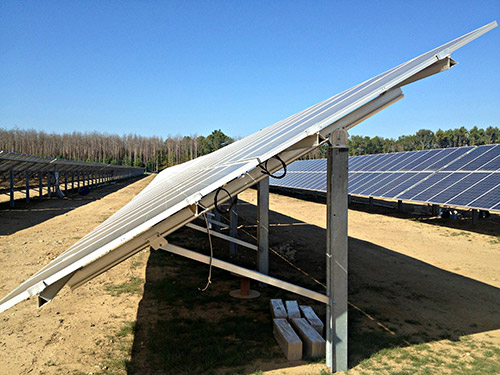
Wind and solar resources, while environmentally ‘clean’, are inherently variable power sources. Winds can gust or stop altogether, and clouds can pass over photovoltaic arrays, changing the power output dramatically. This places unusual demands on grid operations, and can cause tripping of protective relays. Variations in voltage, frequency and reactive power can trip entire legs of the grid off-line. Problems in one location will affect other generation and loads across the grid.
As increasing amounts of wind and solar generation are added to small, weaker grids, instabilities in the system will increase and can become a large problem for grid operators.This causes operators to want to limit the amount of renewables on the grid – even if the renewable resource is plentiful.

The solution to providing clean, reliable power from your grid while relying on variable sources of power such as wind and solar can be found in our grid stability system. It provides a combination of intelligent controls that allow generators (and loads) to talk and work together, along with an energy storage system that can rapidly accept or reject power within a very small number of cycles. This short term storage system provides electrical ‘inertia’, and acts as a ‘buffer’ to eliminate fluctuations and stabilize grid performance.
As fluctuations from wind or solar systems occur, they are ‘absorbed’ into the project’s integral flywheel or flo-battery storage system and smoothed out before they reach the Point of Common Connection (PCC) at the grid. In this fashion our wind and solar farms are unique in their ability to produce clean, FIRM power at the PCC, helping to strengthen the grid. They can also provide enough time to bring stand-by generators back up from a black start, allowing the grid to operate on 100% renewable power if the resource is available. Grid operators can use our system across the entire grid, helping to manage variable output from many different generation plants.

